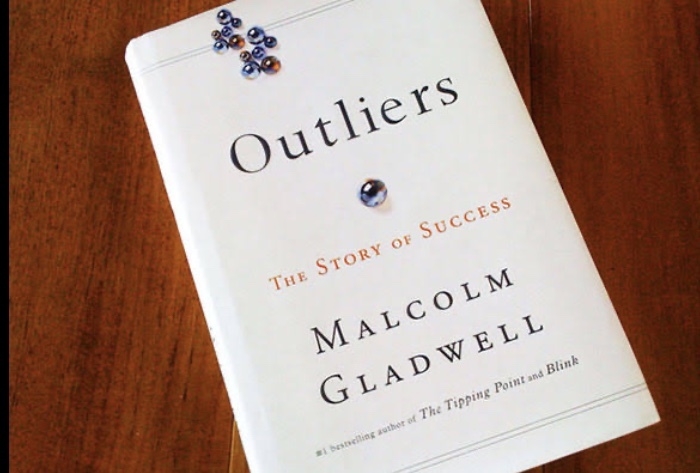Người Armenia
 hàng 1: Tigranes Đại đế, Grigor Người khai sáng, Mesrop Mashtots, Vardan Mamikonian, Movses Khorenatsi hàng 2: Heraclius, Grigor thành Narek, Toros Roslin, Sayat-Nova, Khachatur Abovian hàng 3: Ivan Aivazovsky, Mkrtich Khrimian, Andranik, Hovhannes Tumanyan, Komitas Vardapet hàng 4: Yeghishe Charents, Martiros Saryan, Aram Khatchaturian, William Saroyan, Tigran Petrosian hàng 5: Mher Mkrtchyan, Viktor Hambardzumyan, Charles Aznavour, Cher, Vazgen Sargsyan | |
| Tổng dân số | |
|---|---|
| ~ 8 triệu[1] | |
| Khu vực có số dân đáng kể | |
| 3,018,854[2] | |
| 1,182,388[3]–2,900,000[4] | |
| 483,366[5]–1,500,000[6] | |
| 250,000[7]–750,000[8] | |
| 248,929[9] | |
| 146,573[10] | |
| 120,000[11] | |
| 100,000[12] | |
| 100,000[13] | |
| 100,000[14] | |
| 60,000[15] | |
| 55,740[16] | |
| 41,864[17] | |
| Ngôn ngữ | |
| tiếng Armenia | |
| Tôn giáo | |
| † Kitô giáo đa số: Giáo hội Tông truyền Armenia thiểu số: Công giáo, Tin Lành | |
| Một phần của loạt bài về |
| Văn hóa Armenia |
|---|
 |
| Lịch sử |
| Dân tộc |
| Ngôn ngữ |
Người Armenia (tiếng Armenia: հայեր, hayer [hɑˈjɛɾ]) là sắc tộc bản địa tại Cao nguyên Armenia tại Tây Nam Á.
Người Armenia chiếm phần lớn dân số của Cộng hòa Armenia. Bởi các sự xâm chiếm lâu dài của ngoại bang, một lượng lớn (khoảng 5 triệu) người hải ngoại có gốc gác hoàn toàn hoặc phần nào từ tổ tiên Armenia hiện sống bên ngoài nước Armenia hiện đại. Hầu hết trong số đó sống tại Nga, Hoa Kỳ, Pháp, Gruzia, Iran, Liban, và Syria. Ngoại trừ trường hợp ở Gruzia, Iran, Nga và các quốc gia cựu Xô viết, người Armenia hải ngoại ngày nay hình thành chủ yếu theo sau nạn Diệt chủng Armenia.[18]
Hầu hết người Armenia theo Giáo hội Tông truyền Armenia, một giáo hội Chính thống giáo Cựu Đông phương, đây cũng là giáo hội quốc gia lâu đời nhất thế giới. Kitô giáo bắt đầu được truyền vào Armenia không bao lâu sau thời Đức Giêsu, nhờ nỗ lực của hai tông đồ - Thánh Tađêô và Thánh Batôlômêô.[19] Vào đầu thế kỷ thứ 4, Vương quốc Armenia trở thành quốc gia đầu tiên nhận Kitô giáo làm quốc giáo[20] nhờ sự cống hiến của Thánh Grigor Người khai sáng.
Tiếng Armenia thuộc ngữ hệ Ấn-Âu. Ngôn ngữ này gồm hai dạng có thể hiểu qua lại: tiếng Đông Armenia, ngày nay sử dụng ở Cộng hòa Armenia, Iran cũng như các nước Cộng hòa cựu Xô viết; và tiếng Tây Armenia, sử dụng ở vùng lịch sử Tây Armenia và, sau nạn diệt chủng, chủ yếu ở các cộng đồng Armenia hải ngoại. Bảng chữ cái Armenia do Thánh Mesrop Mashtots sáng chế năm 405 CN.
Chú thích
[sửa | sửa mã nguồn]- Ghi chú
- ^ Cộng hòa Nagorno-Karabakh trên thực tế độc lập và thường được hợp vào Armenia, tuy nhiên thường được quốc tế công nhận là một phần của Azerbaijan trên danh nghĩa
- ^ Cộng hòa Abkhazia trên thực tế độc lập và thường được hợp vào Nga, tuy nhiên thường được quốc tế công nhận là một phần của Gruzia trên danh nghĩa
- Chú thích
- ^ các nguồn:
- Von Voss, Huberta (2007). Portraits of Hope: Armenians in the Contemporary World. New York: Berghahn Books. tr. xxv. ISBN 9781845452575.
...there are some 8 million Armenians in the world...
- Freedman, Jeri (2008). The Armenian genocide. New York: Rosen Publishing Group. tr. 52. ISBN 9781404218253.
In contrast to its population of 3.2 million, approximately 8 million Armenians live in other countries of the world, including large communities in the United States and Russia.
- Guntram H. Herb, David H. Kaplan (2008). Nations and Nationalism: A Global Historical Overview: A Global Historical Overview. Santa Barbara, California: ABC-CLIO. tr. 1705. ISBN 9781851099085.
A nation of some 8 million people, about 3 million of whom live in the newly independent post-Soviet state, Armenians are constantly battling not to lose their distinct culture, identity and the newly established statehood.
- Robert A. Saunders, Vlad Struko (2010). Historical dictionary of the Russian Federation. Lanham, Maryland: Scarecrow Press. tr. 50. ISBN 9780810854758.
- Philander, S. George (2008). Encyclopedia of global warming and climate change. Los Angeles: SAGE. tr. 77. ISBN 9781412958783.
An estimated 60 percent of the total 8 million Armenians worldwide live outside the country...
- Robert A. Saunders, Vlad Strukov (2010). Historical dictionary of the Russian Federation. Lanham, Maryland: Scarecrow Press. tr. 51. ISBN 9780810874602.
Worldwide, there are more than 8 million Armenians; 3.2 million reside in the Republic of Armenia.
- Von Voss, Huberta (2007). Portraits of Hope: Armenians in the Contemporary World. New York: Berghahn Books. tr. xxv. ISBN 9781845452575.
- ^ “Statistical Service of Armenia” (PDF). Armstat. Truy cập ngày 20 tháng 2 năm 2014.
- ^ (tiếng Nga) “National makeup of the population of the Russian Federation (Национальный состав населения Российской Федерации)”. Russian Federal State Statistics Service. Bản gốc lưu trữ ngày 23 tháng 12 năm 2021. Truy cập ngày 5 tháng 1 năm 2013.
- ^ Robert A. Saunders, Vlad Struko (2010). Historical dictionary of the Russian Federation. Lanham, Maryland: Scarecrow Press. tr. 50. ISBN 978-0-8108-5475-8.
- ^ “Total ancestry categories tallied for people with one or more ancestry categories reported 2011 American Community Survey 1-Year Estimates” (PDF). United States Census Bureau. Truy cập ngày 22 tháng 12 năm 2012.
- ^ *“Barack Obama on the Importance of US-Armenia Relations”. Armenian National Committee of America. ngày 19 tháng 1 năm 2008. Bản gốc lưu trữ ngày 6 tháng 1 năm 2013. Truy cập ngày 24 tháng 7 năm 2012.
- “Kim Kardashian Urges Support for Telethon”. The Armenian Weekly. ngày 20 tháng 5 năm 2012. Truy cập ngày 24 tháng 7 năm 2012.
- Milliken, Mary (ngày 12 tháng 10 năm 2007). “Armenian-American clout buys genocide breakthrough”. Reuters. Bản gốc lưu trữ ngày 18 tháng 10 năm 2015. Truy cập ngày 5 tháng 12 năm 2012.
- ^ Thon, Caroline (2012). Armenians in Hamburg: an ethnographic exploration into the relationship between diaspora and success. Berlin: LIT Verlag Münster. tr. 25. ISBN 978-3-643-90226-9.
- ^ Taylor, Tony (2008). Denial: history betrayed. Carlton, Victoria: Melbourne University Pub. tr. 4. ISBN 978-0-522-85482-4.
- ^ “The State Department for Statistics of Georgia”. Bản gốc lưu trữ ngày 16 tháng 6 năm 2006. Truy cập ngày 2 tháng 3 năm 2014., see
- ^ Nagorno-Karabakh Republic. “Population estimates of NKR as of 01.01.2013”. Bản gốc lưu trữ ngày 23 tháng 10 năm 2019. Truy cập ngày 20 tháng 2 năm 2014.
- ^ (tiếng Armenia) Vardanyan, Tamara (ngày 21 tháng 6 năm 2007). “Իրանահայ համայնք. ճամպրուկային տրամադրություններ” [The Iranian-Armenian community]. Noravank Foundation. Truy cập ngày 5 tháng 1 năm 2013.
- ^ Gibney, Matthew J. (2005). Immigration and asylum: from 1900 to the present. Santa Barbara, California: ABC-CLIO. tr. 13. ISBN 978-1-57607-796-2.
- ^ “THE VIRTUAL MUSEUM OF ARMENIAN DIASPORA”. Ministry of Diaspora of the Republic of Armenia. Bản gốc lưu trữ ngày 19 tháng 2 năm 2014. Truy cập ngày 19 tháng 2 năm 2014.
- ^ The distribution of the population by nationality and mother tongue, Kiev: State Statistics Committee of Ukraine, 2001, truy cập ngày 5 tháng 1 năm 2013[liên kết hỏng]
- ^ “Foreign Ministry: 89,000 minorities live in Turkey”. Today's Zaman. ngày 15 tháng 12 năm 2008. Bản gốc lưu trữ ngày 3 tháng 3 năm 2016. Truy cập ngày 5 tháng 1 năm 2013.
- ^ Canada National Household Survey, Statistics Canada, 2011, truy cập ngày 20 tháng 8 năm 2013. Of those, 31,075 reported single and 24,675 mixed Armenian ancestry.
- ^ (tiếng Nga) “В Абхазии объявили данные переписи населения”. Delfi. ngày 29 tháng 12 năm 2011. Truy cập ngày 20 tháng 8 năm 2013.. (According to the 2011 census).
- ^ Richard G. Hovannisian, The Armenian people from ancient to modern times: the fifteenth century to the twentieth century, Volume 2, p. 427, Palgrave Macmillan, 1997.
- ^ see Hastings, Adrian (2000). A World History of Christianity. Wm. B. Eerdmans Publishing. tr. 289. ISBN 978-0-8028-4875-8.
- ^ “Armenia first nation to adopt Christianity as a state religion”. Bản gốc lưu trữ ngày 11 tháng 2 năm 2011. Truy cập ngày 27 tháng 2 năm 2007.
 GIẢM
48%
GIẢM
48%
 GIẢM
2%
GIẢM
2%
 GIẢM
12%
GIẢM
12%
 GIẢM
29%
GIẢM
29%
 GIẢM
32%
GIẢM
32%
 GIẢM
50%
GIẢM
50%



